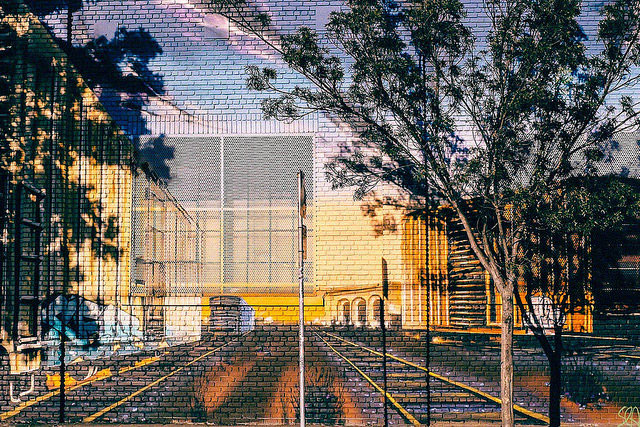When the old designer store downtown
went out of business and was razed to the ground,
the moldy crater where it had stood was adorned with posters
illustrating a luminescent housing development
that was about to be erected in its location,
so tall one could almost see England from its top floors.
But when the builders of the new structure went bankrupt,
the posters faded from the seasonal weather changes
and soon were no more than gaping metal boards.
To make some use of them, and to slightly alleviate
the heavy moods of old jewelers strolling the city streets
and ladies with aging dogs peeking out of handbags,
City Hall took charge and put up ornate watercolors
of the imploded designer store, back in its golden years.
Soon families with strollers readjusted their daily walks
to no longer avoid the downtown. The elegant toddlers
found themselves in a reverie, musing about the building
that used to stand there—an activity healthy enough
that no one objected when a similar set of posters
went up down the street, at the site of a former bookstore
that had suddenly run out of customers.
A waterfront natural history museum was next to go.
Its implosion was met with unforeseen geographic
cataclysms, a landslide making the waterfront
disappear along with the building. Nevertheless,
murals were erected, showing in splendid brushstrokes
the glory days of the museum and of the creatures there.
The oldest tavern in town closed down shortly thereafter.
Award-winning musicians were invited to play at its demolition,
timing their melodies with the metronome of the battering ram.
Soon there were resplendent pencil sketches around
demonstrating the tavern’s unique Victorian architecture
and the fraternal spirit that had made its customers feel immortal.
The circus was next, then the zoo, then the opera house.
Law firms followed suit. Like a house of cards,
the casino folded. Jails were swiftly dismantled,
sometimes at night, to slow the onset of anarchy.
A house of worship was turned into a swimming pool,
but then there was no more water for people to swim in,
and all that was left was a brand new radiant mural
portraying the house of worship, while a small poster
of the swimming pool curled up near one of its corners.
City Hall was the last to fall: its grand edifice
was the hardest to sketch, so intricately it wove
various dead end corridors, visible even from
the outside of the building—a conscious metaphor
for the way they did business back when there was a city.
Finally, a great artist answered the call,
succeeded at painting the building—and then it was gone.
A cloud of old dust hovering over deserted streets,
the city of murals and posters stood silent in summertime,
offering no spin, no bias, no right way to think
to the amateur photographer that happened to wander
onto the old city streets one day, his battery fully charged.
He tried to take pictures but only took pictures of pictures,
and pictures of pictures had always interested him less
than any other pictures. So he jumped back in his car,
kicking up a cloud of sand with his all-wheel drive,
and turned his attention to the forest of reeds and ferns,
which reached much higher now than the highest penthouse.
Photo “Mural at Peralta & 19th” by Sonny Abesamis; licensed under CC BY 2.0
- Effigyville - July 31, 2016


